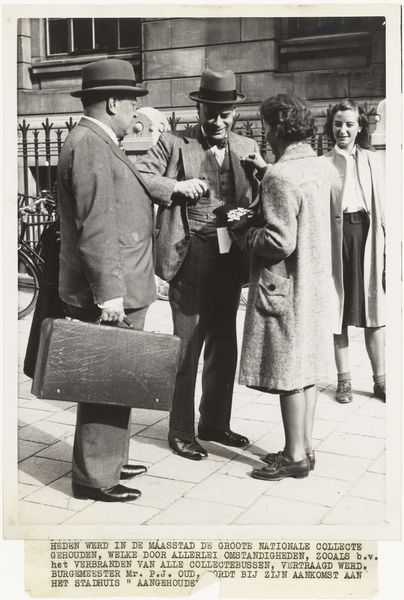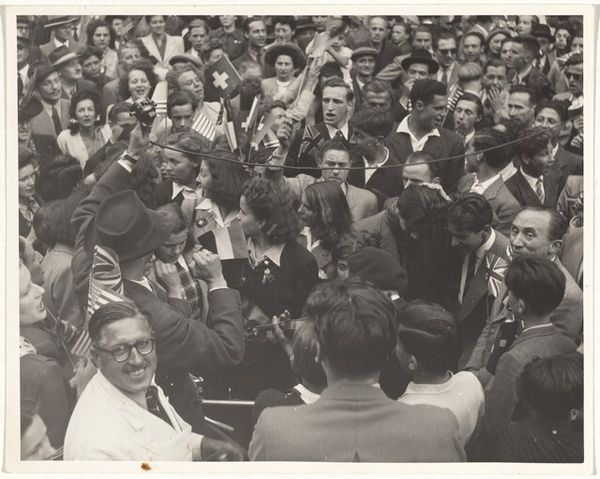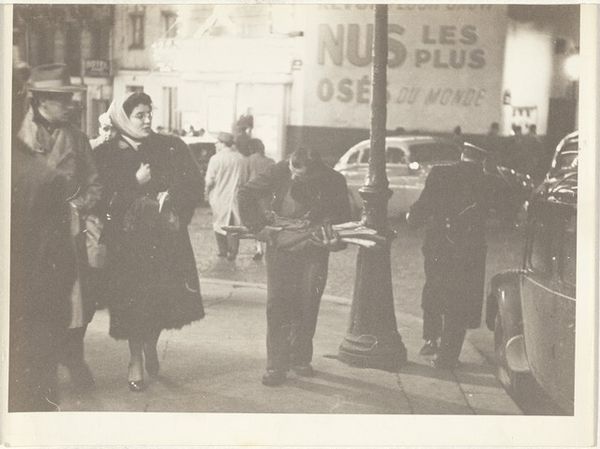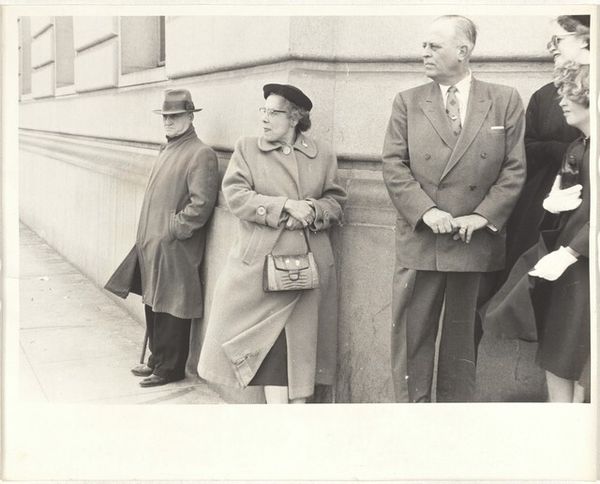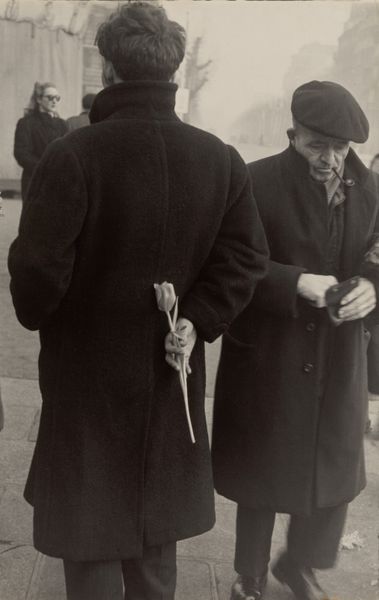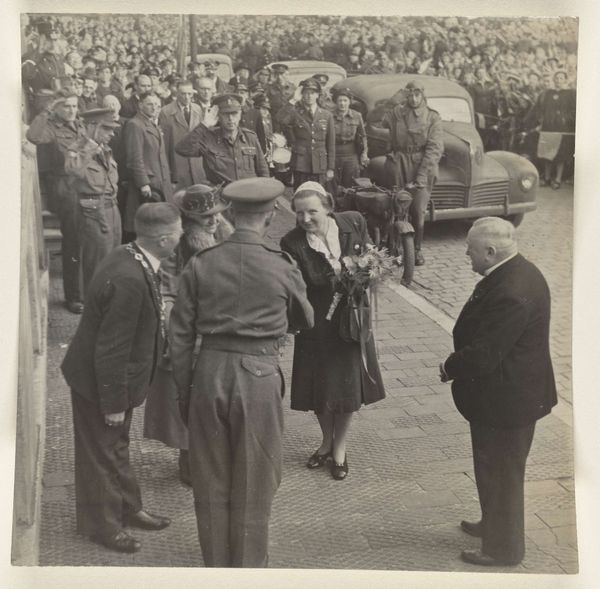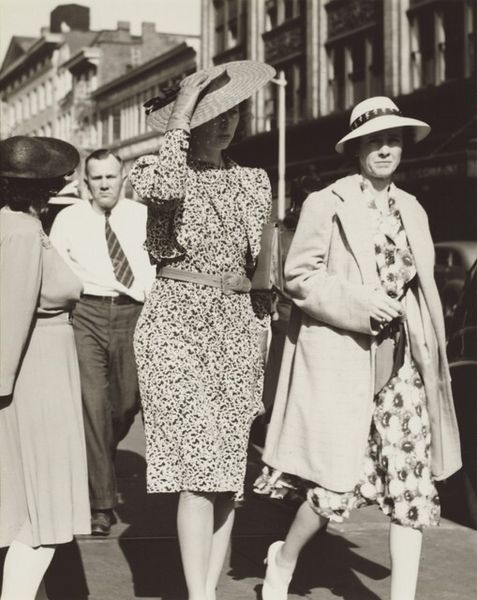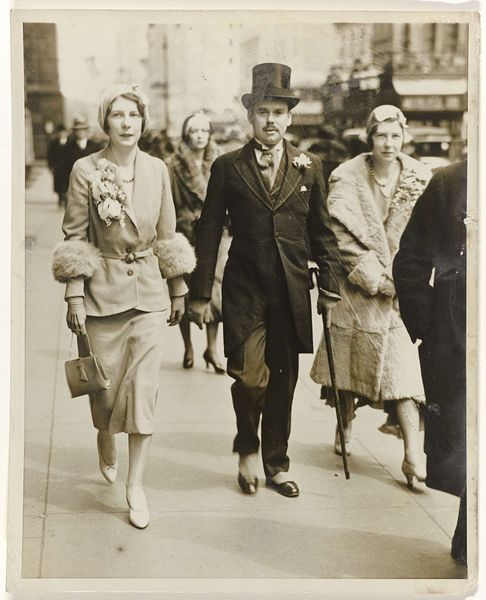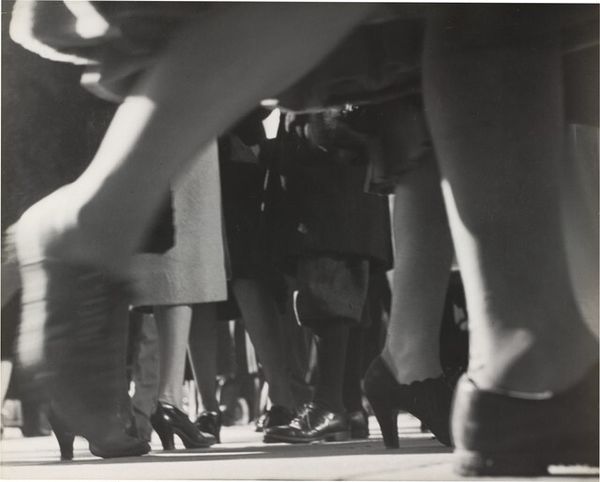
Dimensions: image: 34 x 22.5 cm (13 3/8 x 8 7/8 in.) sheet: 35.7 x 27.8 cm (14 1/16 x 10 15/16 in.)
Copyright: National Gallery of Art: CC0 1.0
Curator: Robert Frank's gelatin silver print, "Avenue du Maine, Paris", taken between 1949 and 1950, offers a glimpse into postwar Parisian street life. Editor: Right off the bat, there's a feeling of profound waiting here, wouldn’t you agree? Almost feels as though this endless, nameless group is expecting a silent revolution. Curator: Absolutely. Frank, deeply affected by the war's impact on society, used his lens to capture this mood. He saw how political posters and advertisements attempted to revitalize France, often presenting an idealized image. But alongside these, stark realities persisted. Editor: He really seizes upon the ordinary to capture its unique poignancy, doesn't he? I can't quite put my finger on it, but the composition itself almost feels accidental... deliberately capturing that imperfection of life on the streets! Did you notice the fallen, possibly discarded, leg with a shoe in the very foreground? Curator: Precisely, the "accidental" feel. The photo is carefully crafted; a sort of commentary that undermines post-war optimism. The positioning of the “Los Olvidados” film poster in the background also points to these ideas of being 'forgotten'. Frank draws parallels between Luis Buñuel's film—about impoverished youth in Mexico City—and those struggling unseen in Europe after WWII. The implication being, is this optimistic image authentic, or just an advert? Editor: True! It makes one consider all these lives… the narrative running below the surface of this city that seems to have bounced back so fast after turmoil. Look at their clothing! Each person seems pressed, prim and proper—they almost resemble soldiers, standing at attention…but maybe soldiers standing at attention for an imagined life. Curator: Frank captured what it meant to exist on the periphery. Not to dismiss those who were benefiting from growing postwar prospects, but to highlight that 'rebuilding' involved active forgetting. In the immediate post-war period, social cohesion, and shared suffering had become critical tools. Editor: It feels like a secret document—revealing how photography could challenge society’s often self-deceptive veneer. Frank was really baring souls here... Curator: Indeed, he encourages a critical look at urban resilience—and its costs. Editor: A vital thing to remember... especially when we, here and now, so love a romantic idea of Paris, but forget what hides just underneath.
Comments
No comments
Be the first to comment and join the conversation on the ultimate creative platform.
